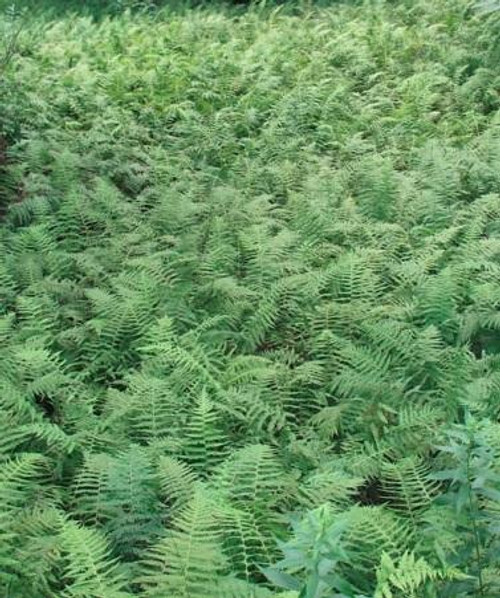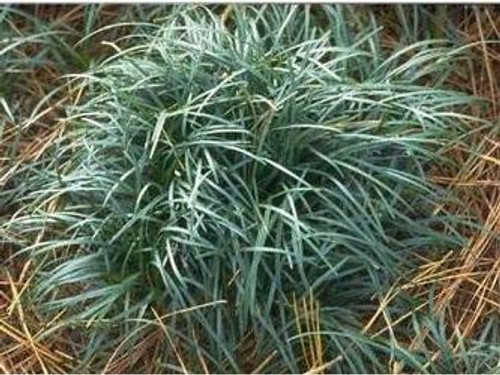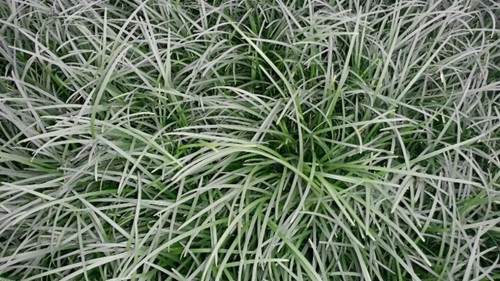Product Description
Dennstaedtia punctilobula Bare Root Plants
Common Name: hay-scented fern
Family: Dennstaedtiaceae
- Zone: 3 to 8
- Height: 1.5 to 2 feet
- Spread: 2 to 3 feet
- Part shade to full shade
- Water: Medium
- Tolerate: Rabbit, Heavy Shade
- Native Eastern North America
Bring the Woodland Charm of Hay-scented Fern to Your Garden
Create a lush, textured tapestry in your shade garden with Dennstaedtia punctilobula, commonly known as Hay-scented Fern.
This graceful, deciduous fern features delicate, lacy fronds that release a sweet, hay-like fragrance when brushed or crushed, adding a delightful sensory experience to your landscape. Hay-scented Fern is a fantastic choice for woodland gardens, shaded borders, or naturalizing in areas with moist soil, bringing a touch of wild beauty to your backyard.
- Type: Deciduous fern
- Size: Grows 1-3 feet tall and spreads rapidly to form colonies.
- Foliage: Light green, lacy fronds with a delicate, feathery texture. Emits a pleasant hay-like fragrance when touched.
- Zone Hardiness: USDA Zones 3-8 (suitable for a wide range of climates)
- Light: Prefers partial to full shade.
Details:
- Fragrant Fronds: The sweet, hay-like fragrance released when the fronds are brushed or crushed adds a unique sensory dimension to the garden.
- Rapid Spreader: Spreads quickly by rhizomes to form a dense groundcover, making it ideal for filling in shady areas.
- Woodland Beauty: Adds a touch of woodland charm to any garden setting.
- Erosion Control: Its spreading habit helps to stabilize slopes and prevent erosion.
Planting and Care of Bare Roots:
- Timing: Plant bare roots in early spring or fall as soon as the ground can be worked.
- Location: Choose a location with partial to full shade and moist, well-drained soil. Hay-scented Fern prefers slightly acidic soil rich in organic matter.
- Soil Preparation: Amend the soil with compost or other organic matter to improve drainage and fertility.
- Planting Depth: Plant the bare roots with the crown (where the fronds emerge) at or slightly above the soil surface. Space them about 18-24 inches apart to allow for spreading.
- Watering: Keep the soil consistently moist, especially during the first year after planting. Once established, Hay-scented Fern is relatively drought-tolerant but benefits from regular watering during dry spells.
- Mulching: Apply a layer of mulch around the plants to retain moisture, suppress weeds, and protect the roots from temperature fluctuations.
- Fertilizing: Hay-scented Fern does not require heavy fertilization. A light application of a balanced fertilizer in spring is usually sufficient.
- Pest and Disease Control: Hay-scented Fern is generally pest and disease-free.
- Dividing: Divide clumps every few years in early spring or fall to maintain vigor and control spread.
Bring the beauty and fragrance of Hay-scented Fern to your shade garden!
Other Details
The most important part of the plant is its root system. Healthy roots are the foundation of a healthy, vibrant plant. The type of plug container used is based on the specific needs of the plants. Perennials offered as bare root traditionally perform better when planted as bare root.Planted in a specialized mix, potted plants have well established root systems. Top growth stage will vary depending on the current life cycle and time of year when shipped. In Winter and early Spring dormant plants may be shipped. Dormant plants may be planted right away, even before the last frost date.
Most bare root varieties are field grown for at least one season, though Hemerocallis and Hosta are grown for two seasons. The bulk of the soil is removed during the harvesting process and the tops of most varieties are trimmed back to the crown. They are graded, packed in shredded aspen or sphagnum moss and stored in freezers until ready to be shipped.
See our Container Sizes and Bare Root Perennials pages for more information.
Plant information and care is provided in the Overview section, Plant Genus Page and general information is provided in the Planting Care & Guides. Additional questions can be asked on each Plant page.
Plant Spacing: Using the maximum mature spread or width of a plant to guide spacing, ensures space to grow to full size. To fill an area sooner, plant them closer together. Just remember, future thinning or transplanting may be needed.
Water: Keep a close eye on newly planted perennials, especially throughout the first growing year. Most early plant loss is due to too much or too little water!











